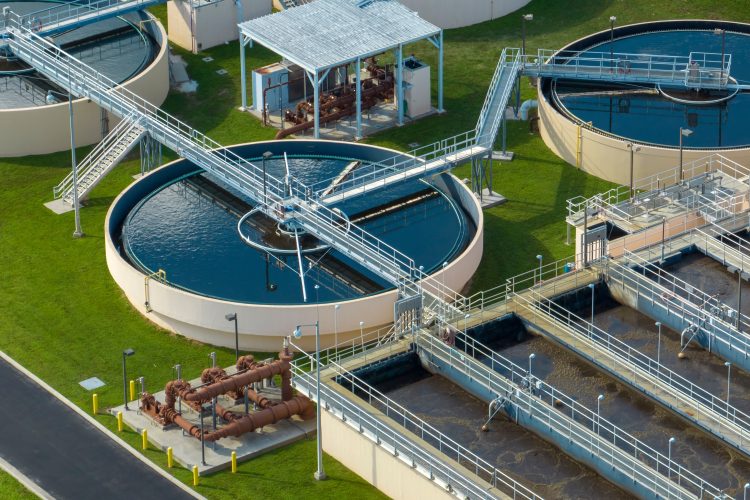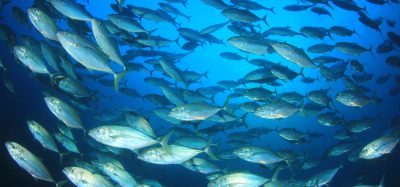Global food chains under wastewater colour threat, study claims
- Like
- Digg
- Del
- Tumblr
- VKontakte
- Buffer
- Love This
- Odnoklassniki
- Meneame
- Blogger
- Amazon
- Yahoo Mail
- Gmail
- AOL
- Newsvine
- HackerNews
- Evernote
- MySpace
- Mail.ru
- Viadeo
- Line
- Comments
- Yummly
- SMS
- Viber
- Telegram
- Subscribe
- Skype
- Facebook Messenger
- Kakao
- LiveJournal
- Yammer
- Edgar
- Fintel
- Mix
- Instapaper
- Copy Link
Posted: 30 October 2023 | Grace Galler | No comments yet
Researchers have claimed that synthetic dyes making their way into wastewater can cause “ecological and human health threats”.


Calling for new laws worldwide on water management, a team of researchers from various universities across the globe have claimed that synthetic dyes entering wastewater can pose a threat to ecological and human health.
According to the study, dyes widely used in the textile, food and pharmaceutical industries pose “a pressing threat” to plant, animal and human health, as well as natural environments around the world.
Billions of tons of dye-containing wastewater are reportedly entering water systems every year, and now group of researchers from the UK, China, Korea and Belgium have said that new sustainable technologies including new membrane-based nano-scale filtration are needed to solve the issue.
What’s more the researchers have stated that “legislation is needed to compel industrial producers to eliminate colourants before they reach public sewage systems or waterways”.
Published in Nature Reviews Earth & Environment, the study “Environmental impacts and remediation of dye-containing wastewater” was written by academics from the University of Bath, the Chinese Academy of Sciences, the Fujian Agriculture and Forestry University, the Korea Institute of Energy Technology (KENTECH), and KU Leuven, Belgium.
The research found that currently, up to 80 percent of dye-containing industrial wastewaters created in low- and middle-income countries are released untreated into waterways or used directly for irrigation. The authors went on to note that this poses “a wide range of direct and indirect threats to human, animal and plant health”.
Despite these ‘severe’ threats to health and ecosystems, the authors found there to be “inadequate infrastructure, investment and regulatory effort” for making dye usage more sustainable, or for treatment of dye-containing wastewater.
“Dyes create several problems when they reach water systems, from stopping light reaching the microorganisms that are the bedrock of our food chains, preventing their reproduction and growth, to more direct consequences like the toxic effects on plants, soils, animals and humans,” said Dr Ming Xie, a Lecturer in the Department of Chemical Engineering at the University of Bath (UK), who believes a multi-pronged approach is needed to combat the concern.
“There are several potential ways to remove dyes from water including chemical, biological and membrane-based techniques, but different dyes required different approaches, and once they reach wastewater systems treatment processes can be highly energy intensive,” continued Dr Xie.
Stating that a worldwide regulatory effort is needed to stop dyes reaching wastewater or other water systems such as irrigation, Dr Xie suggested that “one solution would be to shift from the concept of centralised or regional treatment methods, to decentralised and site-specific treatment at source, by compelling industries to remove dyes from the wastewater they create before it reaches public water systems.”
The use of synthetic dye
First discovered in 1865, Mauveine, the first organic synthetic dye, was discovered in 1865, allowed for the creation of the global dye industry. Since then, more than 10,000 different types of dyes have been synthesised, with annual global production today estimated at one million tons.
Dyes are used in the rubber, leather tanning, paper, food, pharmaceuticals and cosmetic industries, while the biggest user, the textile business, consumes 80 percent of produced synthetic dyes and generates about 70 billion tons of dye-containing wastewater annually.
Impacting the food supply chain
The study found that the combined discharge of China, India and Bangladesh sits at around 3.5 billion tons of textile wastewater each year. “Water contamination is aggravated by synthetic dyes, which in light of water scarcity issues, makes dyes a fundamental environmental and sustainable development issue,” explained the researchers.
“Untreated dyes cause colouration of water bodies, reducing the degree of visible light that passes through the surface layer – hindering photosynthesis for aquatic plants and creating impacts along the food chain.”
However, microalgae, which form the foundation of the aquatic food chain, are reportedly the “most sensitive” to photosynthesis reduction, causing it to suffer from growth inhibition and cell deformation when exposed to a synthetic dye. This effect, and the knock-on suppressed transfer of energy and nutrients up the food chain, could lead to breakdown of entire aquatic ecosystems, explained the team.
What’s more, the effects have also been observed in fish as dyes can deposit in fishes’ gills, lateral lines or brains, leading to toxicological effects such as uncoordinated movement, respiratory distress, liver damage and kidney dysfunction.
World Water Day: Saving the planet from water-polluting industrial farming
“These effects not only reduce the nutritional value of the fish to predators, but also lower their reproductive rates. Toxic dyes can also bioaccumulate in the fishes’ fatty tissue, presenting health risks to humans and animals throughout the food chain,” the researchers noted.
However, the study also pointed out that negative impacts of dyes are also found on land where they “disturb the balance of microbial communities in soil – and in humans”, with the scientists finding that exposure to dyes can trigger allergies, asthma and diseases including dermatitis and central nervous system disorders, as well as organ dysfunction and increased cancer risk.
The need for collaboration
While the study explores a variety of remediation technologies for dye-containing wastewater, including chemical, biological, physical and emerging advanced membrane-based techniques, the authors found that no single technique presents a ‘silver bullet’ for removing dyes. However they did note that there are several “promising methods” that are not yet technologically ready at scale.
Going forward, the academics have suggested that a collaborative effort, led by policymakers, is needed to increase the adoption of advanced remediation technologies and change textile processing methods to minimize the use of the most toxic dyes. In addition, the authors have highlighted a potential commercial impetus – the scope for industries to create new revenue streams from the processing, separation and reuse of wastewater materials.
“Dye containing wastewater is one of the most challenging wastewater streams, which impacts lives and the environment in several countries,” said Co-author Dr Dong Han Seo, from the KENTECH Energy Materials and Devices/Environmental and Climate Technology Track.
“Our review provides the latest insight on how we can effectively manage the challenge from the perspective of circular economy, effectively recycling dyes from wastewaters using treatment strategies such as advanced membrane-based separation to recover both useful dyes as well as clean water.”
Sharing his stance, Dr Jiuyang Lin, from the Chinese Academy of Sciences, added: “This review provides the examples on how we can reduce the dye footprints from production stages using new dyeing techniques.
“Guidance on effective solutions to dye containing wastewaters could be used to treat other challenging wastewater streams, safeguarding lives and the environment for future generations,” concluded Dr Lin.
Related topics
Food Safety, Health & Nutrition, Quality analysis & quality control (QA/QC), Regulation & Legislation, Research & development, Supply chain, Sustainability, The consumer, World Food
Related organisations
Chinese Academy of Sciences, Fujian Agriculture and Forestry University, Korea Institute of Energy Technology (KENTECH), KU Leuven, University of Bath









